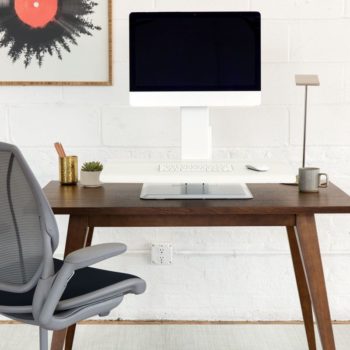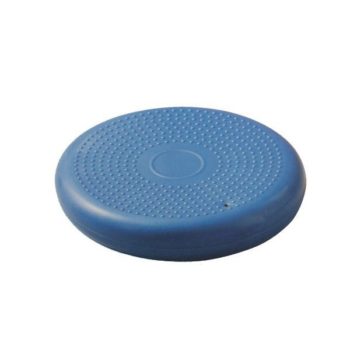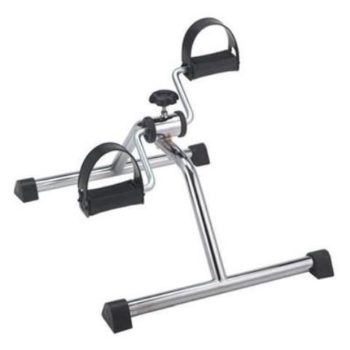If the thought of regular exercise leaves you cold, take heart. New research shows that even the smallest amount of activity can make major health gains and help you to lose weight and stay fit.
ALSO SEE: Our top ant-ageing exercises
Small moves – big gains
Exercise-phobes take note! An easier way to lose weight is to keep moving, even when you’re not doing formal exercise. Scientists have found that the kilojoules (kJ) burnt by jogging and sweating at the gym are in fact negligible compared with those burnt doing everyday movements such as standing, fidgeting and walking.
It’s known as non-exercise activity thermogenesis, or NEAT, and even the least sporty of us can make a huge difference to our health in easy ways. “Even a single step on a stair, or standing up for a few seconds, can put you on a positive path to better health,” says Dr Mike Loosemore, an expert in sport and exercise medicine at the Institute of Sport Exercise and Health at University College London. “Start thinking ‘if I stand for a minute now’ or ‘walk a bit further here’, and it’ll make a difference. They may be small moves but, over a year, the gains are huge.”
Standing makes a difference
Simply standing, rather than sitting, raises your heart rate enough to improve your fitness levels, reduces your risk of heart disease, and burn kilojoules. Standing for three hours a day, five days a week, can burn over 3 000kJ. Keep this up for a period of a year, and you’ll burn over 156 000kJ – that’s like running 10 marathons of over 50km each!
Try this:
- Every time you answer the phone or make a call, stand up to take it.
- Willingly give up your seat in a busy waiting room.
- Hide the TV’s remote control to force you to get up off the couch to change the channels manually.
- Eat your breakfast while leaning against the kitchen worktop, rather than sitting at the table.
- Choose a tall table at your work canteen and stand at it – don’t sit!
- If it’s at all practical, suggest standing meetings at work. They’ll probably take up less of your time, too!
ALSO SEE: 8 Reasons To Start Walking Today
The benefits of a sit-stand desk
Did you know that sitting at a desk for more than 15 hours a day is considered just as bad for your health as smoking? This is because daily sedentary behaviour can lead to a whole host of health issues, from obesity to heart disease, blood pressure problems and health problems such as Type 2 diabetes.
The good news is, there is something you can do about it. Try an adjustable desk mount to raise your PC screen, keyboard and mouse for a while to stand while working, before moving it back to the sitting position. Ergolab has a range of sit stand desks, plus ergonimic chairs and accessories to support healthy movement throughout the day, even at work.

Quickstand-Eco Sit Stand Desk, R7 990, Ergolab
ALSO SEE: Why sitting is the new smoking
Try these today…
Sit actively
If you work from home, put a wobble cushion under your bum. The movements your body has to make to keep you balanced tighten muscles and burn 25kJ per hour (200kJ per work day). Keep it up, and you’ll burn 1 000kJ per working week – about the same kilojoules you’d burn swimming laps at a moderate pace for 20 minutes.

Disc ‘O’ Sit Senior cushion, R455
Pedal at your desk
Slide a small pedal exerciser under your desk, and cycle very gently while you work. Keep it up for an hour, and you’ll burn over 1 700kJ – that’s almost the same amount you’d burn during a one-hour spinning class.

Practice light squats
Every time you want to get out of a chair, first plant your feet on the ground, shoulder-width apart, clench your tummy muscles, and stand, without support from your hands. Each lift equates to a squat – great for toning the major muscles in thighs and buttocks. Do it 10 times a day for buns of steel.
Fidget more
This might sound strange, but tapping or circling your feet underneath your desk, and squeezing a stress ball in your hand, can be enough to burn around 1 000 kilojoules a day. That’s the same as a 30-minute jog.
How to introduce a little more movement
- Take the first step up every escalator. Increase to three or five steps and, soon, you’ll be walking the whole way up.
- Choose to use a loo on a different floor from your own at work. You could use over 2 000kJ in a working week – that’s almost the same burn from a one-hour high-impact aerobics class.
- Each cell phone call offers you the chance to walk up and down in your kitchen, or up and down the stairs (even better). If you use a hands-free phone, swing your arms and your legs, and stretch as you speak – this increases intensity, and kilojoule burn, by up to 30%.
- When pulling into a car park, find a parking space in the furthest corner from the entrance. If you walk 600 steps (that’s back and forth) every day for five days, you’d cover almost 2,5km – and burn up to 600kJ – per working week.
- Regard every annoying wait as an opportunity to walk around – every five minutes spent walking, even slowly, burns 100kJ. Just 15 minutes of gentle walking burns almost as many kilojoules as an eight-minute jump-rope workout.
- If climbing up stairs is a bit too much, take the lift to the floor above yours and then walk down one flight. It’s a small change, but you’ll get things moving, and will burn up to 10kJ descending every flight.
ALSO SEE: 6 Exercise Ideas To Get Your Strength Up
Ways to be more active without noticing
Crank up the air conditioning; throw open the windows – when your body has to produce more heat to keep its core temperature up, it boosts your kilojoule burn by an extra 20kJ an hour. Stay chilly for eight hours a day, and your daily kilojoule burn could be increased to over 160kJ per day, or over 1 120kJ per week – roughly the same as you’d burn in a 30-minute high-impact aerobics class.
Regard every boiling kettle as a stomach-crunch opportunity, and aim to perform as many standing stomach crunches as you can while it boils. Stand with your feet parallel to each other, your knees relaxed, then pull your belly button back towards your spine and contract your pelvic floor. Hold for a few seconds; release. It’s as powerful as an ordinary sit-up, and creates a daily abdominal workout.
ALSO SEE: Get A Flat Tummy At Any Age

